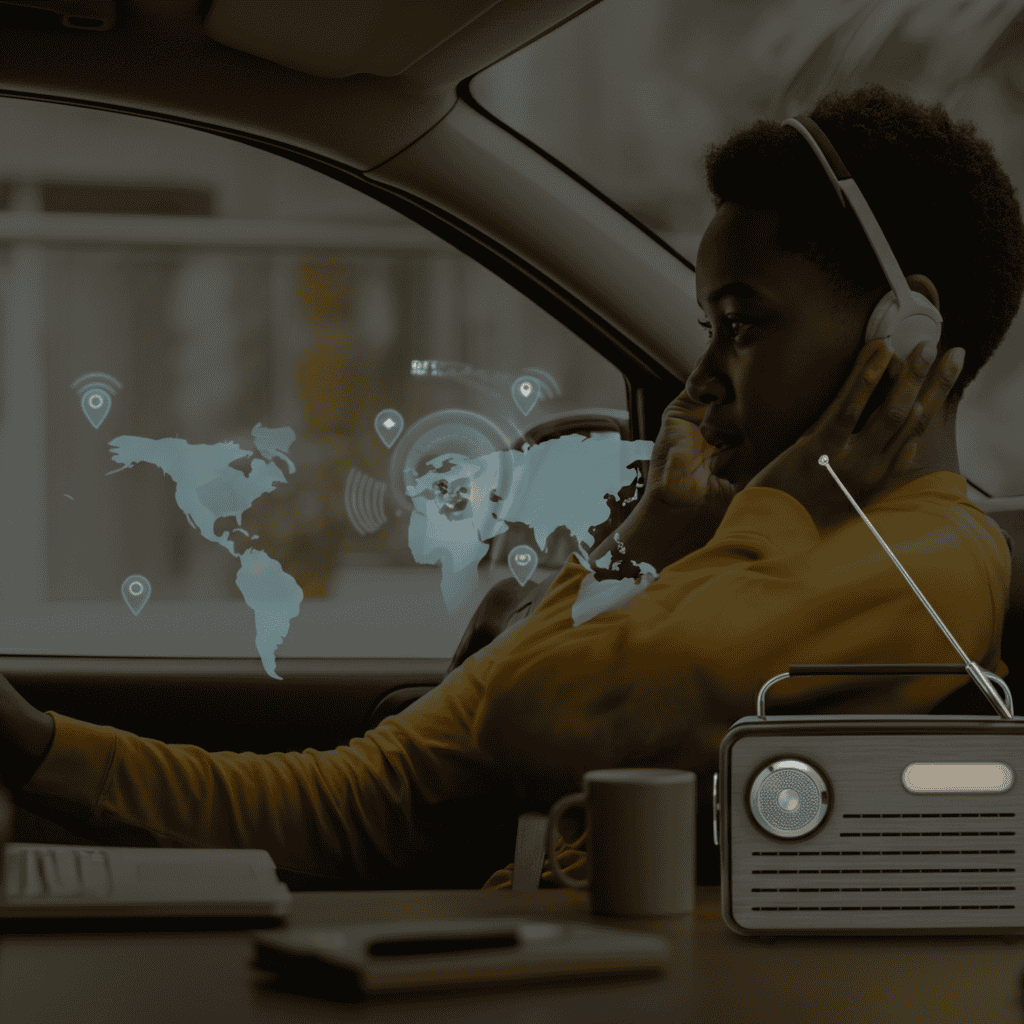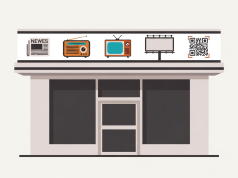While many marketers chase the latest social media trends and digital advertising platforms, radio quietly maintains its powerful grip on audiences worldwide. Far from being a relic of the past, radio has evolved into a sophisticated marketing channel that combines traditional reach with modern targeting capabilities.
Radio reaches over 272 million Americans weekly—more than any other medium. Yet many businesses overlook this channel, assuming it’s outdated or ineffective. This misconception creates a significant opportunity for savvy marketers who understand radio’s unique advantages and modern applications.
This comprehensive guide explores how radio marketing has transformed for the digital age, why it remains relevant, and how your business can leverage this underutilized channel for maximum impact.
The Modern Radio Landscape
Radio has undergone a dramatic transformation since its golden age. Streaming services, satellite radio, and podcast platforms have expanded the medium far beyond traditional AM/FM broadcasts. This evolution has created new opportunities for marketers to reach targeted audiences with precision that was impossible decades ago.
Digital radio platforms like Spotify, Pandora, and iHeartRadio now offer sophisticated targeting options based on demographics, listening habits, location, and even mood. These platforms combine radio’s intimate, personal nature with the precision targeting capabilities that digital marketers expect.
Traditional terrestrial radio hasn’t been left behind either. Many stations now offer detailed listener analytics, online streaming options, and integrated digital campaigns that extend radio ads across multiple touchpoints.
Why Radio Marketing Still Works
Radio’s enduring effectiveness stems from several psychological and practical factors that other media channels struggle to replicate.

The Intimacy Factor
Radio creates a unique, intimate connection between broadcasters and listeners. People often develop parasocial relationships with radio hosts, viewing them as trusted friends whose recommendations carry significant weight. This trust translates into higher credibility for advertisers who sponsor or advertise on these programs.
Multitasking Compatibility
Unlike video content that demands visual attention, radio allows listeners to consume content while driving, working, exercising, or completing household tasks. This compatibility with daily routines ensures consistent exposure without competing for limited attention spans.
Geographic Precision
Local radio stations offer unmatched geographic targeting for businesses serving specific markets. A local restaurant can reach potential customers within a precise radius, while a national brand can customize messages for different regional markets simultaneously.
Cost Efficiency
Radio advertising typically costs significantly less than television or premium digital placements while delivering substantial reach. This cost efficiency makes radio accessible to businesses with modest advertising budgets who need maximum impact.
In a time when marketing budgets are increasingly focused on digital channels, it’s easy to forget that traditional advertising still works—especially when it’s adapted to modern audiences. Radio is a prime example of how legacy media can evolve and remain effective by leveraging its core strengths in today’s fragmented media landscape.
Types of Radio Marketing
Modern radio marketing encompasses several distinct approaches, each with unique advantages and applications.
Traditional Radio Advertising
Classic radio spots remain effective for building brand awareness and driving immediate action. These advertisements work best when they tell compelling stories, use memorable jingles, or feature clear calls-to-action that listeners can easily remember and act upon.
Sponsorship Opportunities
Program sponsorships offer deeper integration than traditional ads. Sponsors can have their brands mentioned by trusted hosts, associated with popular segments, or featured during high-engagement moments like traffic reports or weather updates.
Podcast Advertising
Podcast advertising represents radio marketing’s fastest-growing segment. Host-read advertisements in particular show exceptional performance because they leverage the intimate relationship between podcasters and their audiences.
Streaming Radio Ads
Digital radio platforms offer programmatic advertising options that combine radio’s audio format with digital precision. Advertisers can target specific demographics, interests, and behaviors while maintaining radio’s personal touch.
Crafting Effective Radio Campaigns
Successful radio marketing requires understanding the medium’s unique characteristics and constraints.
Audio-Only Storytelling
Radio advertisements must convey complete messages using only sound. This limitation becomes a strength when marketers focus on vivid language, compelling narratives, and memorable audio branding elements.
Effective radio ads paint pictures with words, using descriptive language that helps listeners visualize products or experiences. Sound effects and music can enhance these mental images without overwhelming the core message.
Timing and Frequency
Radio’s strength lies in repetition and timing. Listeners need multiple exposures to remember and act on radio messages. Smart marketers focus on consistent presence rather than sporadic big pushes.
Prime listening times—morning and evening commutes—command premium rates but deliver highly engaged audiences. However, off-peak slots can offer excellent value for businesses targeting specific demographics like retirees or shift workers.
Clear Call-to-Action
Radio listeners can’t click, screenshot, or bookmark advertisements. Successful radio campaigns feature simple, memorable calls-to-action that listeners can easily retain and execute later.
Phone numbers should be easy to remember (like 1-800-FLOWERS), websites should be simple to spell, and promotional codes should be brief and intuitive.
Measuring Radio Marketing Success
Modern radio marketing offers increasingly sophisticated measurement options that go far beyond traditional reach and frequency metrics.
Digital Integration
Smart radio campaigns integrate with digital touchpoints to enable precise tracking. Custom landing pages, unique promotional codes, and dedicated phone numbers help attribute conversions to radio exposure.
Attribution Modeling
Advanced attribution models can track radio’s influence on online behavior, showing how radio ads drive website visits, searches, and purchases even when listeners don’t immediately respond.
Brand Lift Studies
Radio’s brand-building effects often extend beyond direct response metrics. Brand lift studies measure changes in awareness, perception, and purchase intent among exposed audiences.
The Future of Radio Marketing
Radio marketing continues evolving as new technologies and platforms emerge.
Voice-Activated Integration
Smart speakers and voice assistants are creating new opportunities for audio advertising. Interactive voice ads allow listeners to request more information, add products to shopping lists, or schedule appointments using voice commands.
Programmatic Audio
Automated buying platforms are making radio advertising more accessible and efficient. Programmatic audio allows marketers to purchase radio inventory across multiple platforms with digital-like precision and real-time optimization.
Enhanced Targeting
Machine learning and data analytics are improving radio’s targeting capabilities. Platforms can now predict optimal ad timing, identify high-value audiences, and personalize messages based on listening patterns and preferences.
Getting Started with Radio Marketing
Businesses considering radio marketing should begin with clear objectives and realistic expectations.
Start by identifying your target audience’s listening habits. Research which stations, programs, or platforms they prefer and when they’re most likely to be listening. This research forms the foundation for effective media planning and budget allocation.
Consider starting with a test campaign on a single platform or station. This approach allows you to refine your messaging, measure results, and optimize before expanding to additional outlets.
Work with experienced radio advertising professionals who understand the medium’s nuances. They can help navigate rate negotiations, optimize ad placement, and integrate radio with your broader marketing strategy.
Just like Print Advertising in the Digital Age has found renewed relevance through strategic placement and digital integration, radio marketing thrives when it’s adapted to modern tools and consumer behavior. Both traditional channels demonstrate that with the right approach, “old” media can still deliver powerful results in a digital-first world.
Maximizing Your Radio Marketing Investment
Radio marketing offers a unique combination of reach, intimacy, and cost-efficiency that few other channels can match. While digital platforms capture much of today’s marketing attention and budgets, radio’s consistent performance and evolving capabilities make it a valuable addition to modern marketing strategies.
Success with radio marketing requires understanding its strengths, respecting its constraints, and integrating it thoughtfully with other marketing efforts. Businesses that master these elements can tap into radio’s enduring power to build brands, drive sales, and connect with audiences in meaningful ways.
Consider how radio marketing might complement your existing marketing mix. Whether you’re looking to increase local awareness, reach specific demographics, or add cost-effective reach to your campaigns, radio’s old-school charm combined with new-age capabilities might be exactly what your marketing strategy needs.
Learn more: Why Traditional Marketing Still Matters in Business Success









